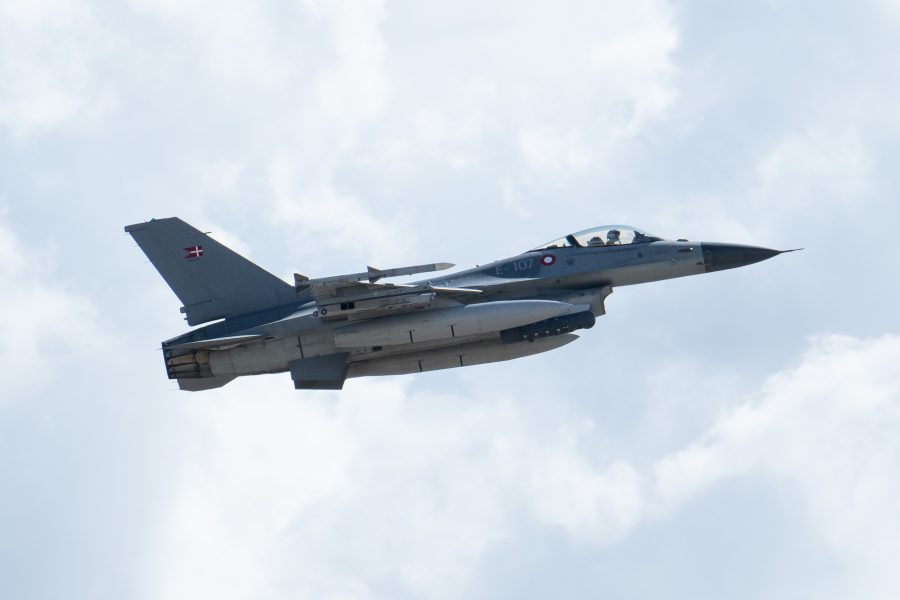As this year’s NATO summit kicked off in Washington, D.C., on July 9, President Joe Biden announced a coalition of allied countries will donate more air defense systems to Ukraine to fend off Russian attacks—and officials previewed an update on the long-awaited F-16s that several nations are poised to deliver to Kyiv.
“The United States, Germany, the Netherlands, Romania, and Italy will provide Ukraine with equipment for five additional strategic air defense systems in the coming months,” Biden said during an evening address. “The United States and our partners intend to provide Ukraine with dozens of additional tactical air defense systems.”
Specifically the White House said the U.S., Germany, and Romania would donate Patriot batteries, the Netherlands would donate Patriot components, and Italy would donate a SAMP-T system. Still more weapons, including NASAMS, HAWKs, IRIS T-SLM, IRIS T-SLS, and Gepard systems, will follow “in the coming months,” according to a release.
It is the first of several announcements expected at the summit, which coincides with NATO’s 75th anniversary.
“In the coming days, NATO will announce robust new measures of support,” National Security Adviser Jake Sullivan said. “We’ll make announcements outlining how we plan to strengthen critical Ukrainian air defense capabilities, and build Ukraine’s airpower through the provision of F-16.”
The updates may cover details about the timeline and the number of F-16 deliveries. Denmark, Netherlands, Belgium, and Norway have all pledged to donate fighters, and Ukraine is poised to get its first ones within the next couple of months from Denmark and Netherlands, but the exact timing and the fighter count remain unclear. Former Dutch Defense Minister Kajsa Ollongren said that following the initial deliveries by Denmark and Netherlands this summer, a continuous supply of F-16s could be expected thereafter. Belgium’s F-16s are expected to arrive by the end of this year.
The multirole jets will be pivotal in striking a wide range of strategic targets, delivering firepower to disrupt Russian ground forces and support Ukrainian army advances. However, experts stressed that the effectiveness of the fighter fleet hinges on factors such as jet availability, pilot numbers, training and experience levels, weapon stock, maintenance proficiency, and other considerations.
If all the pledged F-16s arrive, Ukraine could ultimately have a fleet of 95 jets in the coming years. But the delivery schedule is contingent on some of the NATO nations’ getting F-35 fighters to replace their F-16s, and the training progress of Ukrainian pilots and maintainers.
The U.S. is training 12 Ukrainian pilots by the end of fiscal 2024, with additional pilot training by a European coalition occurring in Denmark and Romania. Experts are urging Ukraine to integrate ground defense, surveillance, electronic warfare, cyberattacks, and NATO intelligence into a comprehensive strategy among airpower, which demands careful planning and timely delivery of the resources.
Besides the F-16s, NATO leaders also spoke July 9 of the alliance’s role amid increasing global threats, provoked by Russia but now amplified by a number of non-member states. Jens Stoltenberg, NATO’s second longest-serving and outgoing Secretary General, emphasized collaboration in defense procurement, highlighting pooling resources and expertise to bolster security and promote deeper integration.
“We have some good examples of how NATO allies are working together in signing contracts, developing capabilities in different ways,” said Stoltenberg. “The F-35 fighter jets are manufactured in United States, of course, but also in Belgium, Canada, Denmark, Germany, Greece, Italy, Finland, the Netherlands, Norway, and the United Kingdom. So it’s actually something we do very much together as allies. Saab Gripen, the Gripen plane is, of course, Swedish ingenuity, but there’s also American components in that plane.”
Stoltenberg also condemned Russia for its “heinous attacks” on Ukraine. In the coming days, he is expected to appoint a new NATO senior representative in Kyiv to enhance Ukraine’s institutional ties with the alliance and coordinate NATO’s engagement with Ukrainian officials.
“At the summit, we’ll make decisions to further strengthen our support to Ukraine, and Russia must understand that they are not able to wait those out,” said Stoltenberg. “They need to sit down and accept a solution where Ukraine prevails as a sovereign independent nation.”
During the remaining two days of the summit, NATO will announce the establishment of a new military command in Germany, led by a three-star general. This command will initiate a training, equipping, and force development program for Ukrainian troops. Officials also said the allies will pledge to collectively provide Ukraine with approximately 40 billion euros ($43 billion) worth of security assistance in the coming year.
By the end of the summit later this week, President Joe Biden will convene over 20 world leaders who have signed bilateral agreements with Kyiv to launch the “Ukraine Compact”—an initiative uniting allies to affirm their support for Ukraine moving forward. Washington signed a 10-year bilateral security agreement with Kyiv on the sidelines of the G7 summit in Italy last month.
